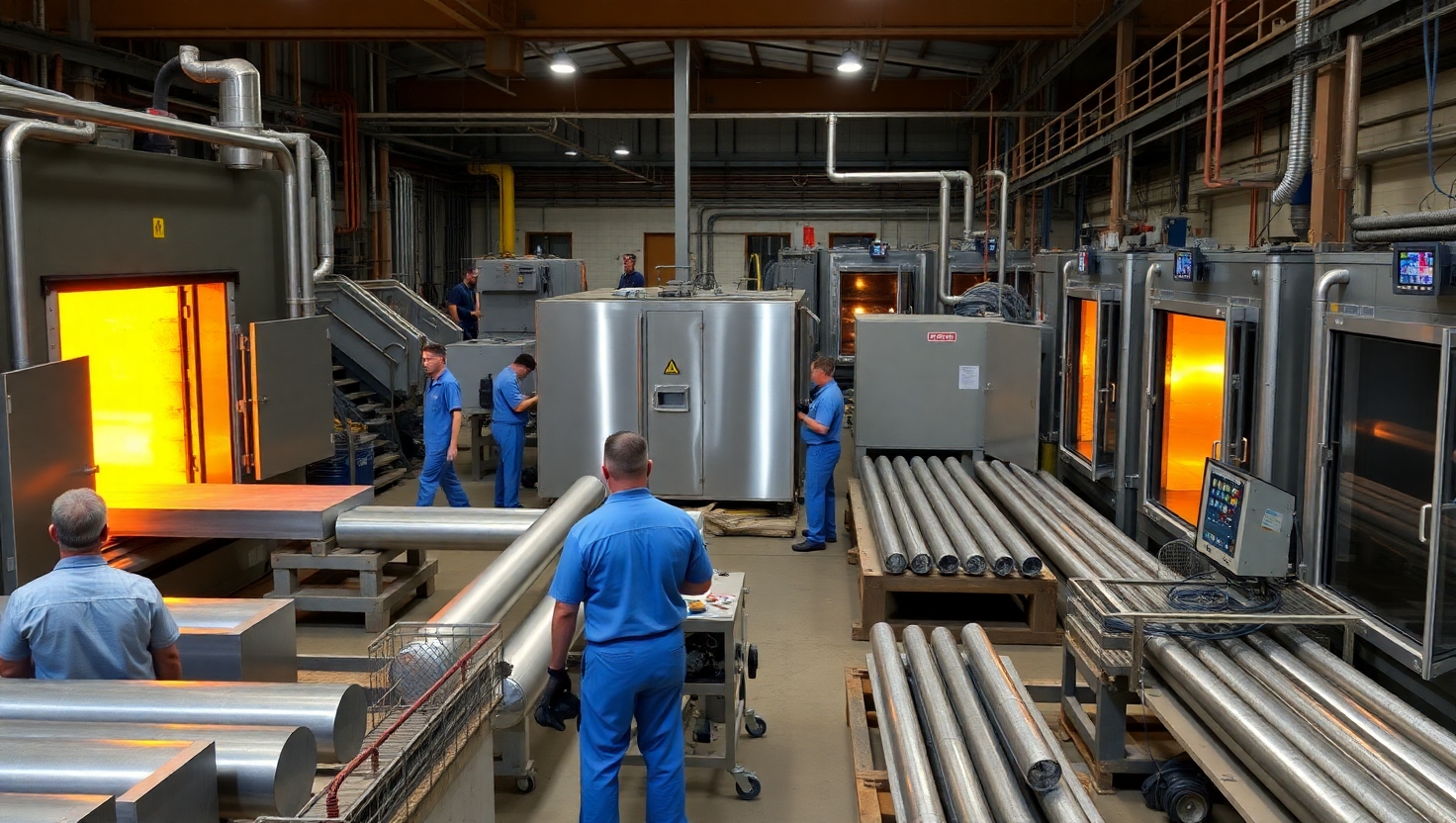Heat Treatment Methods for Aluminium Alloys
Published by: ALUTimes | Date: July 21, 2025
Table of Contents
- Introduction
- Why Heat Treat Aluminium?
- Solution Heat Treatment
- Artificial and Natural Aging
- Annealing Process
- Precipitation Hardening
- Stress Relieving
- Aluminium Tempers Explained
- Applications by Treatment Type
- Conclusion
- Disclaimer
Introduction
Heat treatment plays a critical role in modifying the mechanical properties of aluminium alloys. Whether you’re working in aerospace, automotive, or construction, understanding the right heat treatment can dramatically affect product performance, strength, and formability.
Why Heat Treat Aluminium?
Heat treatment is used to enhance the mechanical characteristics of aluminium alloys, such as:
- Improved strength and hardness
- Enhanced machinability
- Better stress resistance
- Greater fatigue resistance
Solution Heat Treatment
This involves heating the alloy to a temperature where the alloying elements become soluble. Once the elements are in solution, the material is rapidly quenched to freeze the structure. This forms the basis for later aging treatments.
Typical Temperature Range: 480°C to 530°C
Artificial and Natural Aging
After solution treatment, alloys can undergo aging:
- Natural Aging (T4): Occurs at room temperature over days or weeks
- Artificial Aging (T6): Performed at elevated temperatures to accelerate precipitation hardening
Aging significantly improves hardness and yield strength.
Annealing Process
Annealing softens the aluminium alloy and improves ductility. It involves heating to a specific temperature followed by slow cooling. This method is typically used after cold working to relieve internal stresses.
Used for: Non-heat-treatable alloys (1xxx, 3xxx, 5xxx series)
Precipitation Hardening
This technique enhances strength by forming fine particles within the alloy matrix. It’s used in 2xxx, 6xxx, and 7xxx series aluminium alloys. The process involves controlled heating cycles to create precipitate phases that block dislocation movement.
Stress Relieving
Aluminium parts that have undergone heavy machining or forming may retain internal stresses. Stress relieving heat treatments involve heating the material to a lower temperature (around 300°C–400°C) to relieve those stresses without changing the overall properties.
Aluminium Tempers Explained
Tempers define the mechanical properties achieved by heat treatment. Common examples include:
- T4: Solution treated and naturally aged
- T6: Solution treated and artificially aged
- O: Fully annealed
- H: Strain-hardened (used for non-heat-treatable alloys)
Applications by Treatment Type
- Aircraft Structures: 7075-T6 for maximum strength
- Automotive Chassis: 6061-T6 for strength and corrosion resistance
- Packaging Foil: 1xxx-O for maximum softness and formability
Conclusion
Heat treatment is an essential process in tailoring aluminium alloys for specific performance criteria. By understanding the methods—solution heat treatment, aging, annealing, and precipitation—you can select the right alloy and treatment to match your application’s requirements. This ensures both durability and optimal performance in real-world conditions.
Disclaimer
This article is for educational purposes only. Always consult metallurgical experts and reference industry standards when making decisions on heat treatment processes for your projects.

